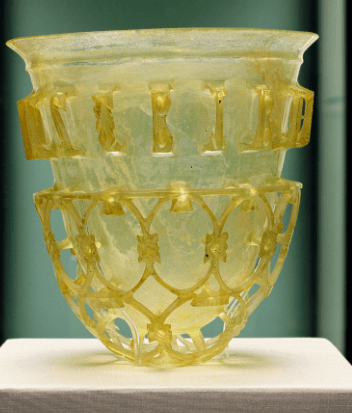The existence of auro-silicates is now admitted without dispute, and gold has for centuries been used to impart colour to glasses, the method used being as follows:
A solution of chloride of gold is added to a mixture of sand with alkalies and alkaline earths or lead, and the whole is then fused, and colourless or yellow transparent silicates of gold thus formed. These are decomposed by being reheated gently to low redness, oxides of gold, or more probably metallic gold, being set free, and red or purple colorations thus obtained. The occurrence of silicates of gold in nature seems to be doubtful.
Experiments conducted tend to show that the alkaline auro-silicates, obtained in the wet way, may have played an important part in the formation of auriferous quartz. The following conclusions have been established by these investigations:
- If an alkaline aurate, obtained by dissolving auric sesquioxide in caustic soda, is mixed with an alkaline solution of silicate of soda (soluble glass), the mixture may be concentrated by evaporation until it has attained a syrupy consistency without being decomposed. Auro-silicate of soda is, therefore, fairly stable, so long as there is an excess of alkali present.
- The decomposition of this auro-silicate is affected by the addition of hydrochloric acid to it by which gelatinous silica is precipitated. This carries down a certain proportion of gold which gives a rose colour to the white magma.
- This decomposition may also be completely effected by the action of an aqueous solution of carbonic acid under pressure. Thus, if the syrupy, alkaline auro-silicate is introduced into a bottle of seltzer water, which is then hermetically closed, the decomposition can be seen to be gradually going on without the semi-fluid mass being dissolved, and the latter is replaced at the end of some days by coherent silica, which, on exposure to the air, assumes a white opaline appearance tinged with rose colour.
- When gelatinous silica, obtained by the decomposition of an alkaline auro-silicate, is heated to redness in a current of steam, it assumes either a beautiful, unalterable rose colour, or a reddish tint with visible grains of gold, according to the proportion of precious metal present, and the conditions under which the precipitation has been effected.
